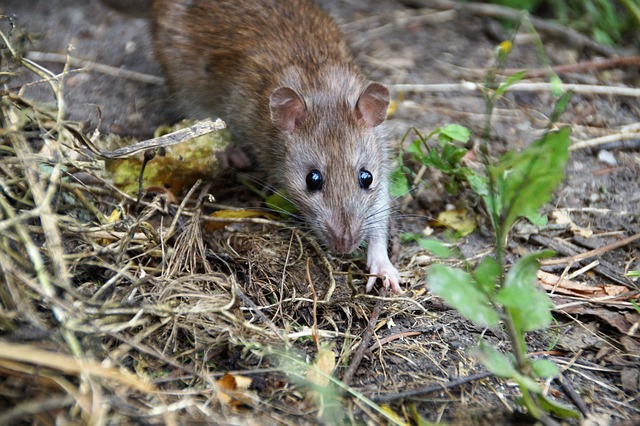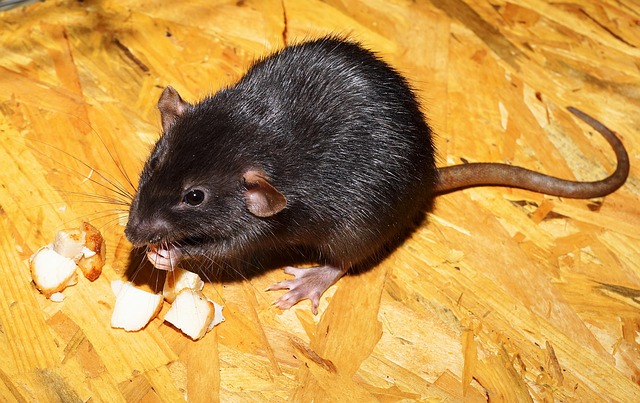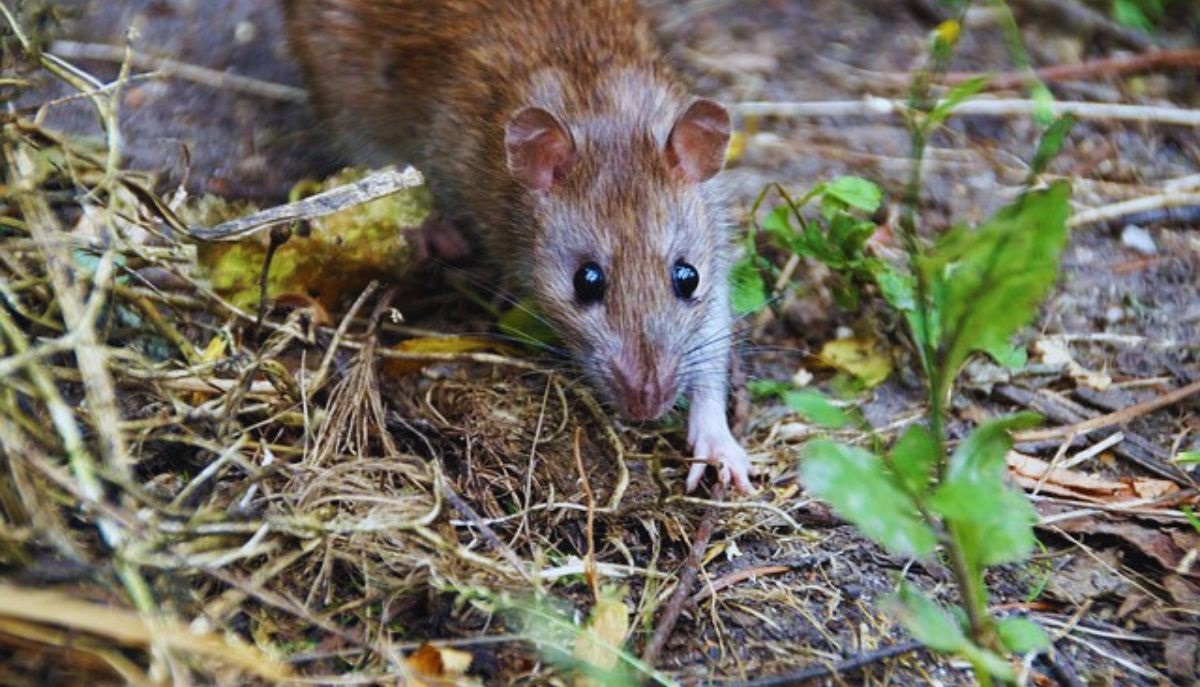Norway Rat Damage Prevention and Control Methods

Rats are highly social creatures thriving in groups; they also help each other by providing food. A rat will seek to free another rat if it is caught in a trap; they go as far as grooming and protecting each other. The female rats also lend assistance in raising the young rats of other female rats. All rat species have four things in common. Seeking a food and water source, shelter, and a place to raise their young. Norway rats are one of the more common rat species that will raid homes seeking these four basic needs.
These rats go by several names, including gray rat, water rat, sewer rat, wharf rat, and brown rat. Norway rats can be found in every U.S. State. Before rats show up indoors, they are first attracted to conditions outdoors; therefore, it’s important to first address outdoor concerns to successfully manage the presence of rats indoors.
Norway Rat Identification
Norway rats are large and stocky, ranging in colors from coarse brown or gray and can even be black. They have a rounded snout and small bald ears, their hairless tails are shorter than their body.
Norway Rat Habitat
Although Norway rat lives in close proximity to humans they prefer damp environments for example ground levels or burrows, livestock buildings, buildings, sewers in urban and suburban, garbage dumps, around residences, cellars, on farms, warehouses, livestock buildings, stores, granaries and many other other structures, even near ponds, streams and river banks.
Norway Rat Diet
Norway rats will eat anything from fruits, cereals, grains, mussels, fish, nuts, meats, lizards, ground nestling birds and their eggs, cooked corn kernels, crabs, seeds, flowers, nectar, raw carrots, etc…
As an Amazon Associate, I earn from qualifying purchases
Signs that you have Norway Rats
Some signs that you may have Norway rats as your guests.
- Seeing them dead or alive.
- Burrows near the perimeter of homes or buildings.
- Grease marks.
- Unpleasant odors.
- Gnaw marks on various materials.
- Large, dark droppings that resemble a capsule.
- You might hear the sound of scampering or scratching noises, especially at night.
- Digging holes in lawns.
- Hole marks in food packages, including packaged pet foods.
- shredded cloth, paper, and other fibrous material for nest building.
- Footprints.
- Gnaw marks on doors or wooden walls and other hard, indoor surfaces.
- Rat droppings may be visible along runways, runways are the paths that rats take from their nesting sites to get to food and water sources.
Norway Rat Inspection both In and Outdoors

How to inspect for Norway rats.
- Inspect around your home or building.
- Slabs under A/C units.
- Fence rows.
- Retaining walls/rock walls.
- Heavy ground cover.
- Wood piles.
- Garbage areas.
- Drop Ceilings.
- Sill plates.
- Basements.
- Indoors, inspect sitting areas.
- vending
areas - Look for droppings, rub
marks, gnaw marks, & damaged products.
Natural Ways to Control Norway Rats Outdoors
Because rats seek food and water sources, and shelter, here is how to bring control naturally.
As said earlier, the key to controlling Norway rats indoors is first controlling them outdoors.
If you do a good job of controlling them outdoors, then there will be no need to seek how to control this pest indoors. Below are several ways to naturally manage rats outdoors.
- Keep your landscape and garden nicely trimmed at all times; a garden that’s allowed to have overgrown plants, shrubs, and grass will attract rats.
- Keep your garden and landscape clean by removing leaf litter and other dead plant materials.
- Steel wool can be used to effectively seal up small holes and cracks.
- Ensure there are no open containers that can collect water; rats will use these containers as a water source. Dispose of old, unused tires that can also collect water.
- Many garden plants have a center cup that holds water. Rats will use these plant types as a water source, so make sure that the water is removed from the center cups of these plants, or try plant replacement.
- Make sure that your garbage disposal area is cleaned, your garbage container should be in good repair with no holes at the bottom, and containers should also have tightly fitted lids.
- Ensure that at the end of the day, your pet food and water dish have no food or water and are cleaned and put away.
- Keep your yard free of clutter because rats are attracted to clutter and will use these areas to take cover.
- Remove fallen fruits from your garden.
- Recycling and trash cans must be kept clean.
- Rats hate the scent of these plants; their presence in your garden will deter rats: Spearmint, mint, citronella plants, and pennyroyal.
- Herbs such as rosemary, oregano, cayenne, sage, black pepper, and basil have been known to create a boundary that will keep rodents at bay.
- Trim or remove ground cover.
- Pick up fallen plant material, for example, twigs, leaves, etc., to eliminate nesting materials for rats.
- Trim back branches and limbs about 3 ft away from your home or building structure because rats and other pests use branches and limbs that make contact with the foundation as a bridge to move from ground level to move onto building structures, followed by seeking an entry point in your home.
Natural Ways to Control Norway Rats Indoors
The natural way to control Norway rats indoors is by sanitization and exclusion; this method of rat control safeguards the use of rodenticides.. This method will also keep out rodents and other pests.
- Make sure to seal all entry points such as small openings around doors and windows, openings around pipes, and electrical wires that enter your home.
- Seal all cracks and crevices
- You should have door stops that are in good repair. If door stops are missing, then make sure to get them installed.
- Make sure that all food particles, tea, coffee, water, and other liquids are cleaned up immediately.
- Areas where foods are prepared and consumed should be cleaned thoroughly.
- Fix any leaky faucets or pipes.
- After watering your indoor plants, allow plants to drain, then empty the saucer of excess water right away.
Other Ways to Control Norway Rats
If there is an infestation where your situation is critical, then more drastic measures must be taken to bring complete control, which is the use of products that have been made available.
- Rat traps can be used; however, when using traps, make sure these traps are out of the reach of kids and pets. For best protection, rat traps can be placed in a tamper-resistant bait station. If baits are preferred over traps, ensure that baits are secured in tamper-resistant bait stations. When placing baiting stations outdoors, space each station 15-30 ft apart; for mice, space baiting stations 8-12 ft apart.
- Bait stations should be placed along structures or pathways that rats travel. Avoid placing baiting stations in the garden.
- Check stations daily, at least a few times a week, to check for any dead rats.
- Place paraffinized pellets deep inside rat burrows, and only cover the burrow with soil when activity has stopped.
- Glue boards can be used indoors to bring control.
Additional information
You may prefer not to do the job yourself, so your next step is to hire a professional pest control company to do the job for you.
Note: Important message- when using rodenticide, follow the manfacture’s directions on the label. Keep rodenticides inaccessible to children and pets by placing rodenticides in tamper-resistant rat bait stations. Also, these stations must be secured and anchored so that they can’t be moved by kids, pets, the rain, or the wind.
10 Frequently Asked Questions (FAQs)
Conclusion
The control of Norway rats is possible; the presence of one rat is one rat too many. Once rats make their presence known move quickly to bring control because rats can multiply pretty quickly, and before you know it, you can be facing an infestation. But with this guide, your rat concern will be brought to an end, or you may not have rats yet, but your living conditions may be one that will cause them to show up at your doorstep. Use this guide as a preventive measure to discourage the presence of rats and other pests in your home and your yard.


Great information on managing Norway rat populations both outdoors and indoors! It’s clear that proper prevention starts with controlling the environment and reducing access to food and water sources. I particularly like the tips on using herbs and maintaining a clean garden to naturally deter rats. It seems that outdoor management can significantly reduce the need for indoor interventions. How effective do you think the natural methods are compared to traditional pest control methods like traps or poison, especially in urban areas?
If you already have an infestation, using natural methods may take a while to bring control; in this case, pesticides will give quicker results. But if there is no infestation, and proper hygiene and sanitization practices are carried out continually, there would be no need for pesticides because there will be no pest, and if by chance one shows up because of proper hygiene practices pest will not stay around.